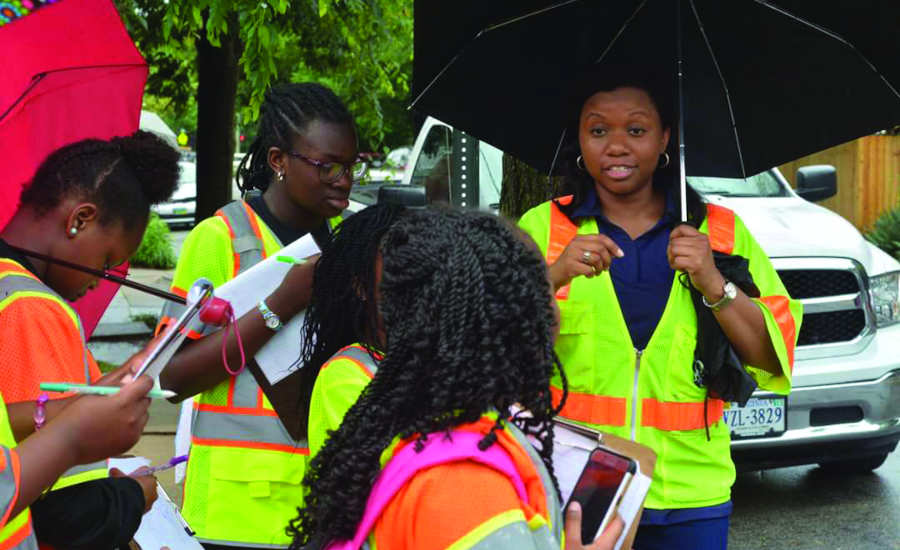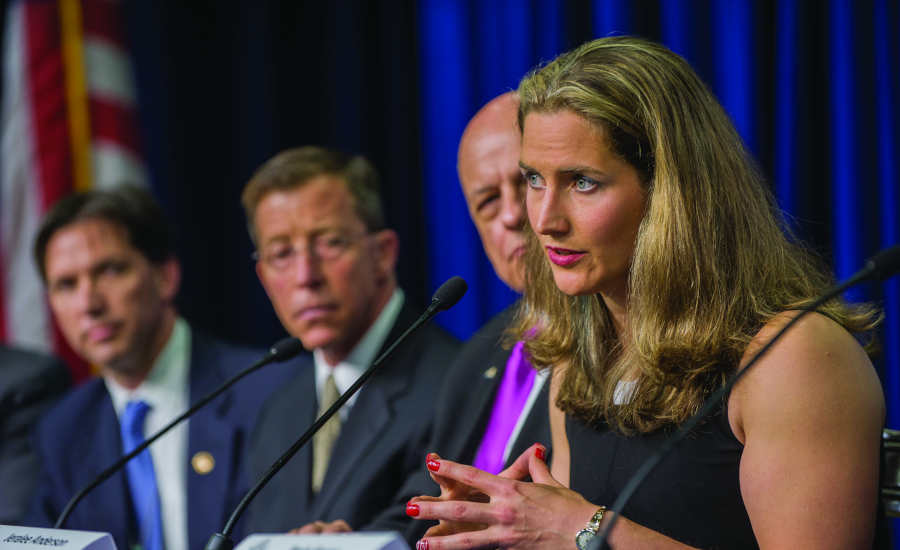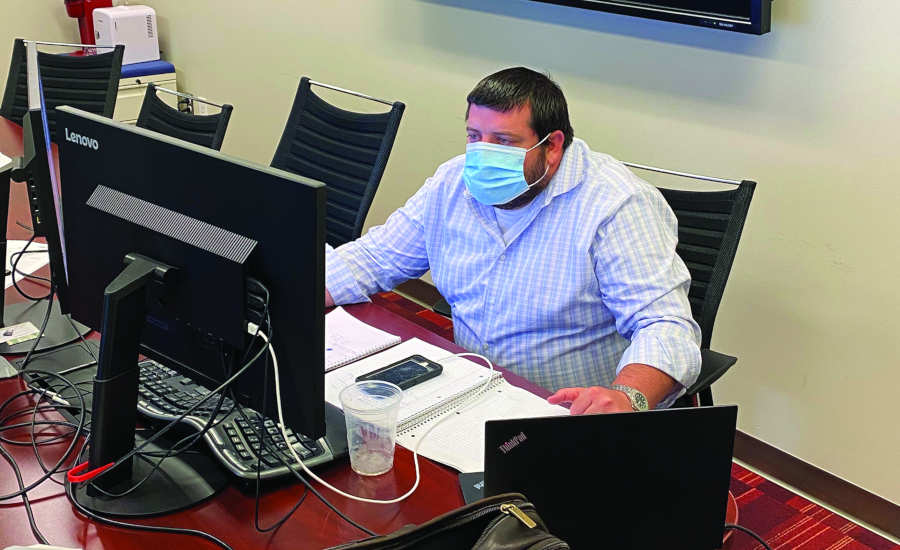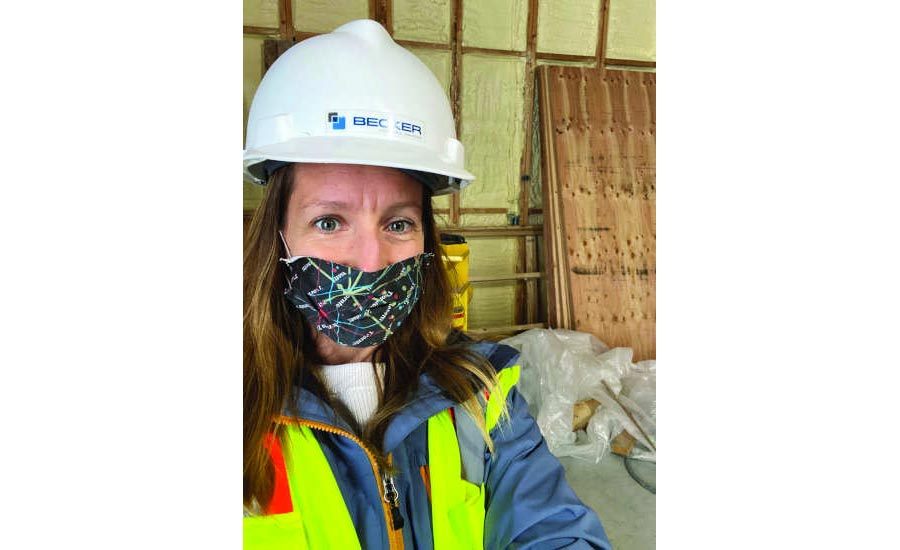Inclusion Critical to Solving Industry Issues
Diversity is one of the most important goals for the construction industry because attracting and retaining workers of all backgrounds solves other issues, this year’s Top 20 say. A broader pool of workers can “cure” the industry’s labor shortage, says Todd.
“For so long, labor shortage and diversity have been two separate topics,” she says, noting firms and unions need to expand how they perform outreach, including “talking to the people that you weren’t talking to before.”
Several Top 20s say the industry is moving toward measuring and collecting diversity, inclusion and equity data to increase transparency. Data helps recruit and retain diverse candidates, says Courtney O’Neill, vice president of AECOM in Seattle, because it “adds that level of trust people can fall back on that I think helps build up the industry as well.”

Danielle R. McCray
I’ve learned that people truly care about you. It’s beyond the work you do for them and the projects you work on. I’ve been able to connect with partners on a human level. In the past year, some of my professional relationships have translated into personal friendships.
Ryan Johnson, computational design specialist at Clark Nexsen in Raleigh, N.C., says the American Institute of Architects established a rule last year preventing firms from submitting entries for its national design award without providing demographic information.
Companies are also implementing successful methods to expand their demographics. Keon B. West, construction executive at Clark Construction Group in San Diego, says his firm makes “a concerted effort” to hire women-, minority- or veteran-owned small businesses in urban areas “to collaborate with” on training or subcontractor programs. For example, Clark worked with San Francisco officials to cultivate such businesses, which were “brought into the fold of each of our subcontractors” on the $1.4-billion Chase Center—home to the NBA’s Golden State Warriors. The company held training sessions and programs to expose people to the trades.
Shaun Sleeth, regional president at McCarthy Building Cos. Inc. in Roseville, Calif., says his firm provides “project-based educational programs and outreach programs,” but they haven’t provided enough training for non-union or open-shop areas “where the training isn’t as robust.”
McCarthy is building its own training centers in Arizona and Texas. “We have one where we bring in craftworkers and train them,” Sleeth says, “so we can supply projects with a skilled and trained workforce.”
Meanwhile, 100%-union contractor J. Fletcher Creamer & Son Inc. is also dealing with a labor shortage. Martin Downs, president of the Hackensack, N.J.-based firm, says his company tries to entice young potential recruits when it sponsors or participates in the ACE Mentor Program, which introduces high school students of different backgrounds to careers in construction, engineering, architecture and related disciplines. As effective as these programs may be, challenges remain—ones in which diverse points of view would be best able to recognize and address. A varied staff produces different perspectives and results, says Jeyre Lewis, construction manager at PCL Construction Services Inc. in Glendale, Calif. “Looking at and solving problems in a different manner really enhances the overall culture of problem solving.” In other situations, “one of the struggle points that we have is changing the mindset of the unions to diversify,” says Downs, who notes that union and non-union shops alike “must change our approach to attract this diversified workforce. … this is most certainly an industry wide challenge and not just one that the unions face, it’s all organizations and companies.”
Downs says his company has worked with unions at sites such as in Atlantic City, N.J. that include a diverse selection of co-ops and interns as part of an initiative by the city.
Jeralee Anderson, president and CEO of Greenroads International in Seattle, says firms must “manage out those implicit biases” they might have in hiring with a multiprong approach that includes a company equity statement and understanding “what’s going on in your local community and making sure you actually are proactive about who you’re hiring.”
Also, “recruiters need to be diverse,” and staff members should be educated “on communication styles because they differ so much based on people’s backgrounds,” says Elizabeth Brownell, associate at Thornton Tomasetti in Portland, Maine.
After all this, firms must make an effort to retain a diverse hire. Erin Peavey, architect, design researcher and vice president at HKS in Dallas, says it’s critical for firms “to create safe spaces for conversation” about diversity before and after employees are hired. She says people need “to understand that it’s OK to not always have the right answers or to think different things.”
Jacob Blanton, transmission and distribution regional operations director at Burns & McDonnell in Wallingford, Conn., says his firm looks for and recognizes “the value in a diverse set of opinions.” He adds, “When you go to the recruitment team, you say, ‘Where are my diverse candidates,’ right? If you don’t start there, then maybe they don’t come in the door,” Blanton says.
Everyone agrees that the industry’s leadership must be diversified at the highest levels to truly effect change. “Representation matters,” O’Neill says, “and I think it starts from the top.”
Backstory: Powering Through the Pandemic

Jeralee Anderson
The way the pandemic impacted our nonprofit organization was similar to our very first years of business, so having a roller coaster of financial uncertainty was familiar territory. At some point, I stopped worrying about what’s around the corner and just handled reality.

Jacob Blanton
We are an ESOP ... and [it] defines our culture. In the pandemic, I truly feel my team and I leveraged the owner mindset to continue to do whatever it takes to continue to make our clients successful while always supporting one another, often in new and creative ways.

Elizabeth Brownell
My parents made sure [my siblings and I] worked hard and were grateful for the opportunities of life. This was an incredibly challenging year, personally and professionally, but I recognize that so many people were faced with much more difficult circumstances than I was.

Jacob Blanton
We are an ESOP ... and [it] defines our culture. In the pandemic, I truly feel my team and I leveraged the owner mindset to continue to do whatever it takes to continue to make our clients successful while always supporting one another, often in new and creative ways.























